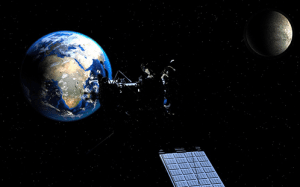
The stars really are the limit for Western Sydney University researchers who have been awarded a Department of Defence grant to build an advanced star mapping system that will transform the way we monitor moving objects in space.
A team from the Biomedical Engineering and Neuroscience (BENS) program [within the MARCS Institute] have received a share of $5.7 million and 12 months to build a new prototype vision system for a satellite that could one day assist to identify and disintegrate rogue space pollution.
Western Sydney University was one of just 22 national universities to receive funding under the prestigious Next Generation Technologies Fund.
BENS research program leader, Professor André van Schaik, said the race was now on to engineer a prototype that could be deployed into space.
“At any moment there are thousands of tons of man made space pollution orbiting around the earth.
“This poses an immediate danger of collision, particularly for our intelligence equipment,” he said.
“For this reason it is important to be able to monitor the objects in orbit and to track and work out the path that this debris follows.
[social_quote duplicate=”no” align=”default”]“If we can accurately determine the position of space objects, we are then able to avoid collisions and get a better understanding of what is out there.”[/social_quote]
Professor van Schaik said that to effectively capture the movement of objects in space his prototype had to be capable of capturing images of stars, satellites and debris over a large range of light intensity and velocity.
“To remain functional in Earth’s orbit, devices also need to be low power, lightweight, and tough enough to withstand radiation in the atmosphere,” he said.
“Cameras that are currently being used in space require long exposure times to see faint objects, and fast moving objects result in streaky images.
“For the first time, we are investigating the use of high-tech event-based cameras, inspired by biological visual systems, such as the human eye.”
Professor van Schaik said ground based tests results have shown that the event based cameras are capable of capturing fast moving bodies without requiring high frame rates or producing large amounts of data, making them ideal for use in space.
The research project is expected to take 12 months, after which a prototype will be delivered to the Defence Science and Technology Group, within the Department of Defence.
